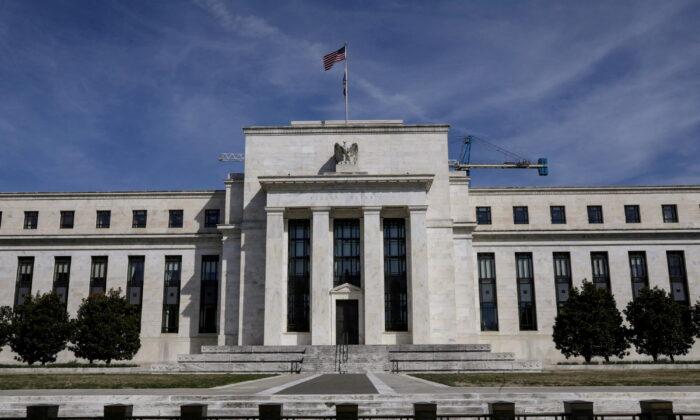In response to the coronavirus pandemic, the Federal Reserve took extraordinary and unprecedented action to cushion the economic blows resulting from the global health crisis.
When Congress approved trillions of dollars in new government spending, whether it was the $2.1 trillion CARES [Coronavirus Aid, Relief, and Economic Security] Act or the $1.9 trillion American Rescue Plan (ARP), the Treasury Department issued fresh debt to cover the enormous shortfall. That prompted the central bank to issue new units of currency to purchase the debt.
The Fed didn’t stop with just buying Treasury debt. The institution also acquired mortgage-backed securities and corporate bonds. This increased its balance sheet to a record $8.9 trillion.
Uncle Sam’s Wallet
Critics charge that the Fed has enabled officials to embark upon enormous deficit-financed spending efforts by monetizing the debt. This could exacerbate America’s finances, resulting in fiscal consequences for the federal government and the American people.
The national debt has topped $30 trillion, the federal deficit is projected to remain above $1 trillion for the next decade, and the government is contending with $200 trillion in unfunded liabilities and expenditures. But financial experts warn that debt-servicing payments could skyrocket in the coming years, especially if the Fed keeps raising interest rates to combat inflation.
If there is a hint of concern surrounding the national debt, Treasury investors will demand higher compensation for the heightened risk. Moreover, this can threaten the greenback because the dollar’s value diminishes if there is lower demand for U.S. bonds.
Market analysts purport that the Fed is performing a juggling act: fighting inflation while maintaining economic growth. But there might be another feat the central bank needs to accomplish: combatting higher prices without severely hemorrhaging the federal government’s finances.
Is the Debt Sustainable?
Experts have been ringing alarm bells about unsustainable debt levels.“The U.S. federal government is on an unsustainable fiscal path,” Powell told the Senate Banking Committee in November 2019. ”Debt as a percentage of GDP is growing, and now growing sharply ... And that is unsustainable by definition. We need to stabilize debt to GDP. The timing the doing that, the ways of doing it—through revenue, through spending—all of those things are not for the Fed to decide.”
But the central bank chair noted the U.S. government should only grapple with massive debt levels once the economy has stabilized.
According to the Congressional Budget Office (CBO), the federal debt is projected to top 180 percent of the gross domestic product (GDP) by 2052. The budget watchdog warned that if policymakers refuse to act, the soaring debt will weigh on long-term economic growth, prevent crucial investments, accelerate a fiscal crisis, and stop officials from responding to unforeseen events.
What About the Broader Economy?
Since the Fed’s tightening cycle began this past spring, money supply growth has been flat. But has the damage already been done to the U.S. economy?
Many economists note that the labor market has been fractured: real wage growth is still in negative territory, productivity is tumbling, the number of people quitting remains elevated, job openings continue to be above 10 million, and 7.5 million Americans work two jobs.
Asset bubbles have been the next notable consequence of the Fed’s historic monetary expansion. From stocks to cryptocurrencies, these assets reached record highs before crashing into a bear market. It’s uncertain if the latest gains are part of a bear market rally or if the bottom has been touched and a bullish cycle has started. But the equities arena is hanging onto every word from the Federal Reserve, be it Powell or St. Louis Fed Bank President James Bullard.
What’s Next for the Fed?
Will the present monetary system remain intact, or will it experience an overhaul?Many developments are unfolding that could result in long-term consequences for households, policymakers, and geopolitical pursuits.
Whether the central bankers hit the reset button on the monetary system remains to be seen. But the pandemic might have ushered in a new era for the economy and fiscal and monetary policy, one that Powell’s successor might facilitate and install into the fabric of the Fed’s infrastructure.





